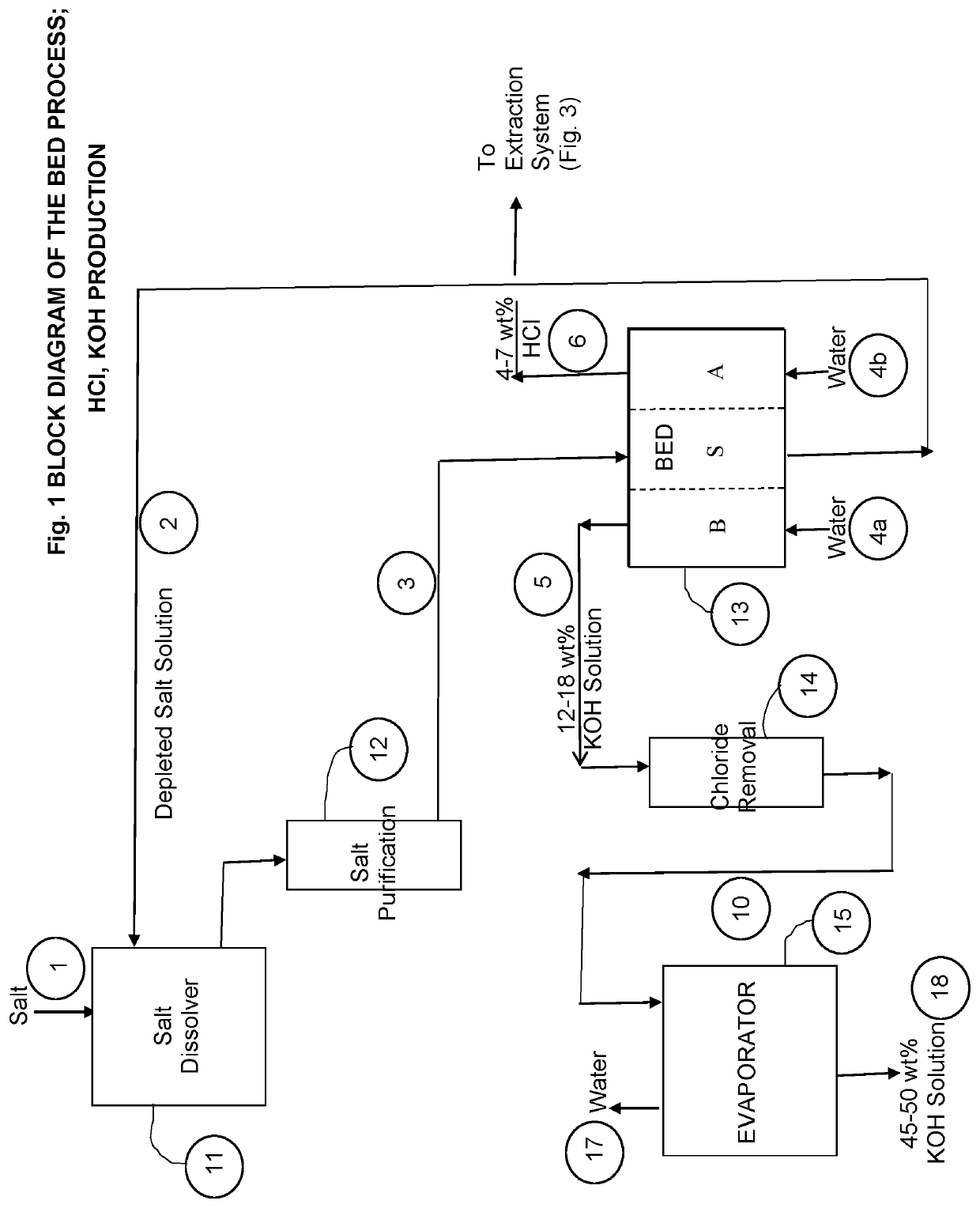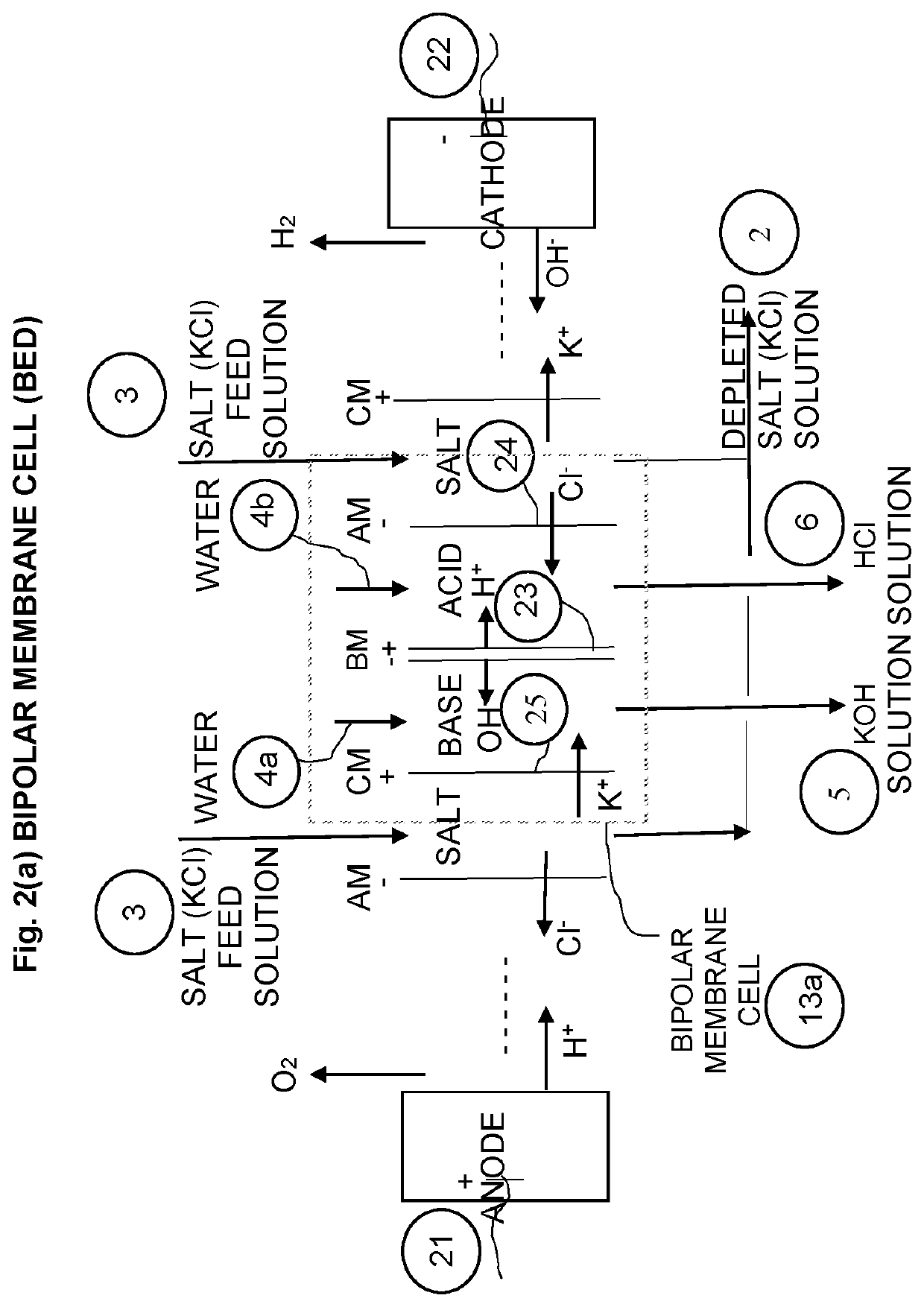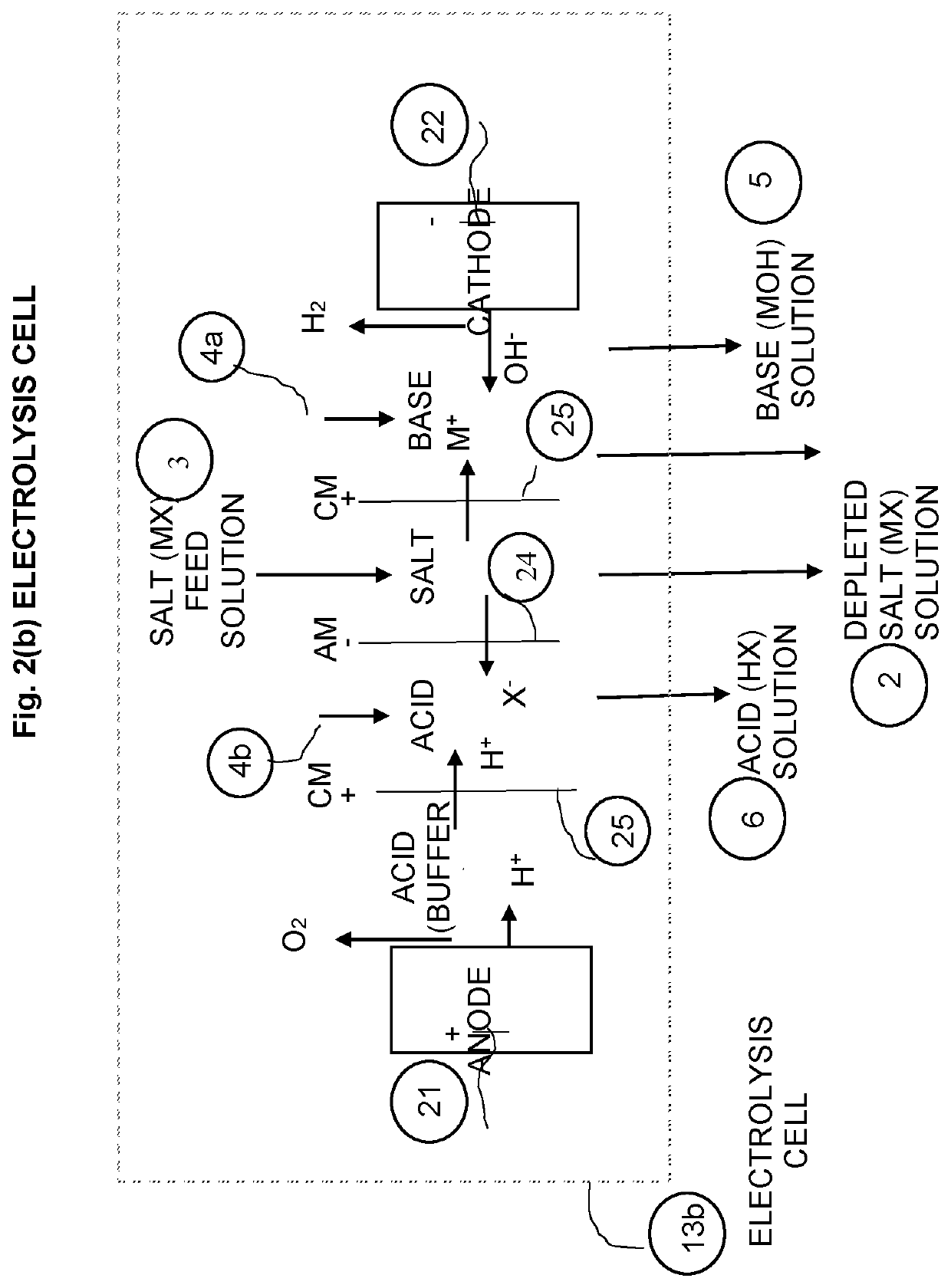Production of Alkali Metal Hydroxide, Chloride and Sulfate via Electrodialysis and Subsequent Downstream Processing
a technology of alkali metal hydroxide and chloride sulfate, which is applied in the direction of solvent extraction, membranes, separation processes, etc., can solve the problems of acid corrosion, difficult and presently uneconomical concentrating of acid products, and marketed as hazardous to handle, etc., to achieve low boiling point elevation, energy saving, and low cost
- Summary
- Abstract
- Description
- Claims
- Application Information
AI Technical Summary
Benefits of technology
Problems solved by technology
Method used
Image
Examples
Embodiment Construction
[0056]FIG. 1-3 show block diagrams of the process for producing potassium hydroxide and calcium chloride. Referring to FIG. 1, feed salt KCl (potassium chloride, Stream 1) is dissolved in the recycle depleted salt solution, stream 2, in a dissolver unit 11. The resulting (nearly) saturated salt solution is purified through pH adjustment / precipitation and filtration (not shown in the drawing) and further purified in a chelating resin ion exchange column 12 to remove contaminants such as calcium and magnesium. The procedure for salt purification is akin to that practiced commercially in the chlor-alkali process.
[0057]The purified salt solution (Stream 3) is then processed in a three-compartment water splitter (BED) unit 13a.
[0058]An electrolysis unit 13b, such as shown in FIG. 2(b), can be used in place of the BED unit 13a.). More details on the electrolysis process can be found in the literature.
[0059]The water splitter unit 13a, also termed bipolar membrane electrodialysis (BED) un...
PUM
| Property | Measurement | Unit |
|---|---|---|
| wt % | aaaaa | aaaaa |
| wt % | aaaaa | aaaaa |
| wt. % | aaaaa | aaaaa |
Abstract
Description
Claims
Application Information
 Login to View More
Login to View More - R&D
- Intellectual Property
- Life Sciences
- Materials
- Tech Scout
- Unparalleled Data Quality
- Higher Quality Content
- 60% Fewer Hallucinations
Browse by: Latest US Patents, China's latest patents, Technical Efficacy Thesaurus, Application Domain, Technology Topic, Popular Technical Reports.
© 2025 PatSnap. All rights reserved.Legal|Privacy policy|Modern Slavery Act Transparency Statement|Sitemap|About US| Contact US: help@patsnap.com



